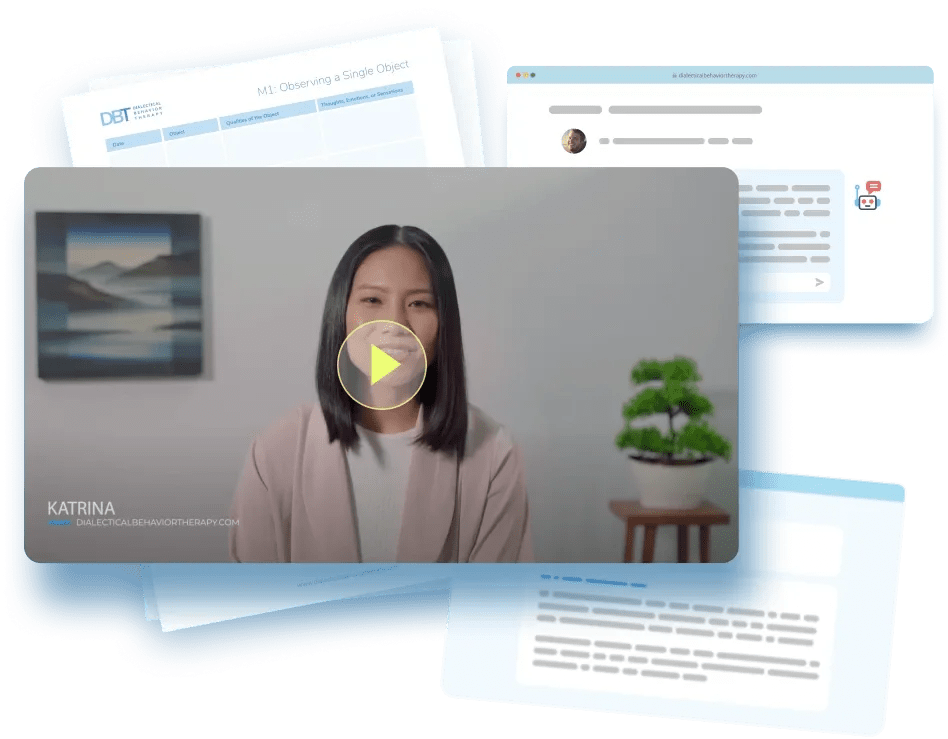PR2: STOPP Card
Virtual Coach
Work step-by-step through the Problem-Solving, Coping & Relapse-Prevention exercise with the virtual coach.
Introduction
When problems pile up, structured thinking can help you slow down and choose your next move wisely. Tools like the Five-Step Problem Solver help organize decisions when there’s time to reflect. But not every situation gives you that luxury. Sometimes emotions hit fast, and you need a quicker way to reset before you react.
When emotion spikes, the “thinking” brain goes offline in seconds. The STOPP micro-routine:
S top · T ake a breath · O bserve · P ull back · P roceed. Creates a six-second gap that brings the prefrontal cortex back online so you can respond, not react. Originally adapted from Linehan’s STOP DBT cue and Wells’s metacognitive pause, clinical pilots in anxious and impulsive populations show rapid drops in heart-rate, rumination, and behavioral regret.
Instructions
Goal: Practice the full STOPP sequence five times daily (three planned, two in-the-moment) for 14 days.
Step 1: S, Stop
Freeze, plant both feet.
Verbal Cue: “Pause.”
Pro-tip: Physical stillness signals the brain to switch modes.
Step 2: T , Take a Breath
One slow in-breath (4 sec) + longer out-breath (6 sec).
Verbal Cue: “In … out.”
Pro-tip: Longer exhale triggers vagal calm.
Step 3: O, Observe
Notice what’s happening inside and outside: thoughts, feelings, body, surroundings.
Verbal Cue: “I notice …”
Pro-tip: Label don’t judge. Just facts.
Step 4: P, Pull Back
Mentally step into helicopter view: What would I tell a friend? What’s the bigger picture?
Verbal Cue: “This is a thought, not a fact.”
Pro-tip: Insert a Balanced Thought (see CR4).
Step 5: P, Proceed
Choose your next wise action, aligned with goals & values, not urges.
Verbal Cue: “So I will …”
Pro-tip: Tiny steps (< 5 min) beat grand plans.
Daily Drill Checklist
- Morning: STOPP with a neutral event (e.g., misplacing keys)
- Midday: STOPP again
- Evening: STOPP again
- Record 1 live use during an emotion ≥ 6/10
- Record 2nd live use during emotion ≥ 6/10
Tip: You can jot your STOPP check-ins on the worksheet or in your phone notes.
FAQs
I forget the steps mid-panic. Help!
Glance at the card; muscle memory grows after ~30 drills. Pair with Five-Senses Grounding (SM8) if breath alone isn’t enough.
Does ‘Pull Back’ mean suppress emotion?
No. It means de-identify (“I’m noticing anger” vs “I am anger”). Suppression backfires; decentering cools reactivity.
How is this different from Mindful Minute (SM7)?
Mindful Minute trains baseline attention; STOPP is a rapid deployment sequence for acute spikes.
Can I teach STOPP to kids?
Yes. Shorten to STOP (Stop–Take breath–Observe–Plan) and use colors or Super-Hero imagery.
Disclaimer
If you have any behavioral health questions or concerns, please talk to your healthcare or mental health care provider. This article is supported by peer-reviewed research and information drawn from behavioral health societies and governmental agencies. However, it is not a substitute for professional behavioral health advice, diagnosis, or treatment.

